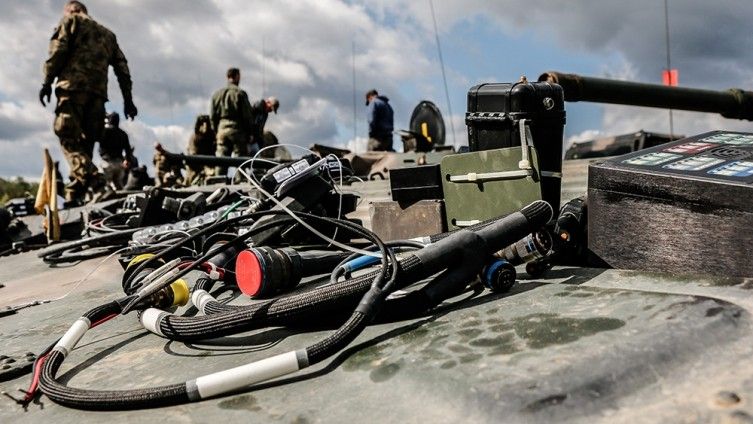Land Forces
Poland Accelerates the Procurement of Simulators for the Land Forces

The Armament Inspectorate announced that changes shall be expected when it comes to the procurement procedure concerning the simulator systems acquired for the land forces. In one portion of the tender, the best final offer was chosen. The other one, pertaining to a comprehensive battlefield simulator with laser shooting simulators, involves “activities tied to acquisition of the product as soon as possible”.
The procurement in progress, aimed at the acquisition of simulator systems, is the second of its kind, organized in recent years. The first tendering procedure announced in 2015 was then canceled in 2019 when one of the bidders submitted an appeal at the National Chamber of Appeal.
The current procurement procedure has been divided into two separate portions. One pertains to a comprehensive battlefield simulator for battalion training activities (KSSPW), and laser shooting simulator kits (LSS). The other refers to five tactical modern battlefield simulators (STWPW).
Regarding the latter (STWPW), the Armament Inspectorate announced recently that an offer of consortium of companies such as Thales Polska Sp. z o.o., Thales AVS France oraz RUAG Defence France was chosen as the best one. It had been given 100 points (80 for price and 20 for the period of guarantee). Another offer by Rheinmetall Defence Electronics GmbH was rejected, as according to the Amrament Inspectorate it did not meet the requirements.
Through the use of the IT hardware, the STWPW systems would be employed to organize and execute exercises, training, tactical planning, all with regards to the modern battlefield. The procurement procedure concerning 5 simulators still involves two bidders, within the framework of the Public Procurement Law.
Referring to the other portion of the procedure - the procurement of a comprehensive battlespace simulation for battalion-level training, along with laser-shooting simulators, spokesman of the Armament Inspectorate, Major Krzysztof Płatek told us:
When it comes to the comprehensive battlefield simulation system for battalion-level training and laser shooting simulators for the military equipment operated by the armored and mechanized elements, expected to meet the needs of the launch of a Combat Training Centre in Drawsko Pomorskie and to secure the joint Polish and allied forces training at the Field Training Facilities of the Land Forces, activities have been undertaken to procure these assets as soon as possible.
The Armament Inspectorate has not unveiled any further details, but as “activities pertain to acquisition as soon as possible” have been undertaken, change of the procurement formula could have been implemented, for instance, to procure the simulator following the “urgent operational requirement” criterion, justified by the necessity to prepare infrastructure for joint Polish-US training, as per the Enhanced Defence Cooperation Agreement signed in August 2020, and/or following the FMS requirements.
We do know, however, that the Victory Eagle exercise is scheduled to take place in Drawsko Pomorskie in the autumn that - as the General Command of the Polish Armed Forces announced - would support the process of establishing a training centre there. Whether, and to what extent the activities are undertaken by the Armament Inspectorate and the Polish MoD when it comes to procurement, remains an open question.
The KSSPW and LSS devices shall make it possible to practically verify, in realistic weather and terrain conditions, the planned tactical training operations, up to the battalion level. Secondly, the systems shall enable the users to perfect their combat and engagement-related skills, and simulate the fact that the given target was (or was not) hit. Finally, the systems should also provide an option of assessing the recorded hits. The individual systems are to be equipped with software that contains a tool, which would support the staff in training (command, team), in the decision-making process, and the assessment of the training conducted. The systems are expected to include laser sensors and emitters, mounted on the trained soldiers and the armament replicas, along with devices and software enabling the course participants to communicate and software cooperate. There should also be an option of archiving, recording, and visualizing the realized training procedures.
Rafał Surdacki, Jakub Palowski
